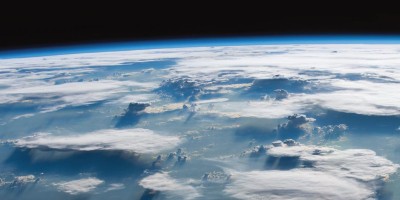Melting of the edges of the Greenland ice sheet by the ocean since 1979 is — counterintuitively — controlled almost as much by air temperature as by ocean temperature.

References
Straneo, F. & Heimbach, P. North Atlantic warming and the retreat of Greenland’s outlet glaciers. Nature 504, 36–43 (2013). A review article describing the processes that link the North Atlantic Ocean to Greenland’s marine-terminating glaciers.
Catania, G. et al. Future evolution of Greenland’s marine-terminating outlet glaciers. J. Geophys. Res. Earth Surface 125, e2018JF004873 (2020). An article that reviews current understanding of marine-terminating glacier dynamics and their response to climate forcings.
Fried, M. et al. Distributed subglacial discharge drives significant submarine melt at a Greenland tidewater glacier. Geophys. Res. Lett. 42, 9328–9336 (2015). One of the first papers to use observations of calving front shape to show conclusively that upwelling plumes drive enhanced submarine melting.
Sutherland, D. et al. Direct observations of submarine melt and subsurface geometry at a tidewater glacier. Science 365, 369–374 (2019). This paper reports the only direct measurements to date of submarine melting at a marine-terminating glacier.
Goelzer, H. et al. The future sea-level contribution of the Greenland ice sheet: a multi-model ensemble study of ISMIP6. Cryosphere 14, 3071–3096 (2020). A paper presenting the results of a huge community effort that aimed to project future changes in the Greenland ice sheet in response to atmospheric and oceanic warming.
Additional information
Publisher’s note Springer Nature remains neutral with regard to jurisdictional claims in published maps and institutional affiliations.
This is a summary of: Slater, D. & Straneo, F. Submarine melting of glaciers in Greenland amplified by atmospheric warming. Nat. Geosci. https://doi.org/10.1038/s41561-022-01035-9 (2022).
Rights and permissions
About this article
Cite this article
Air temperature — not just ocean warming — affects submarine melting of Greenland glaciers. Nat. Geosci. 15, 763–764 (2022). https://doi.org/10.1038/s41561-022-01036-8
Published:
Issue Date:
DOI: https://doi.org/10.1038/s41561-022-01036-8
- Springer Nature Limited


